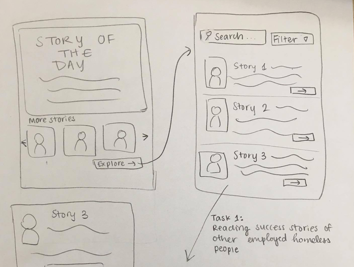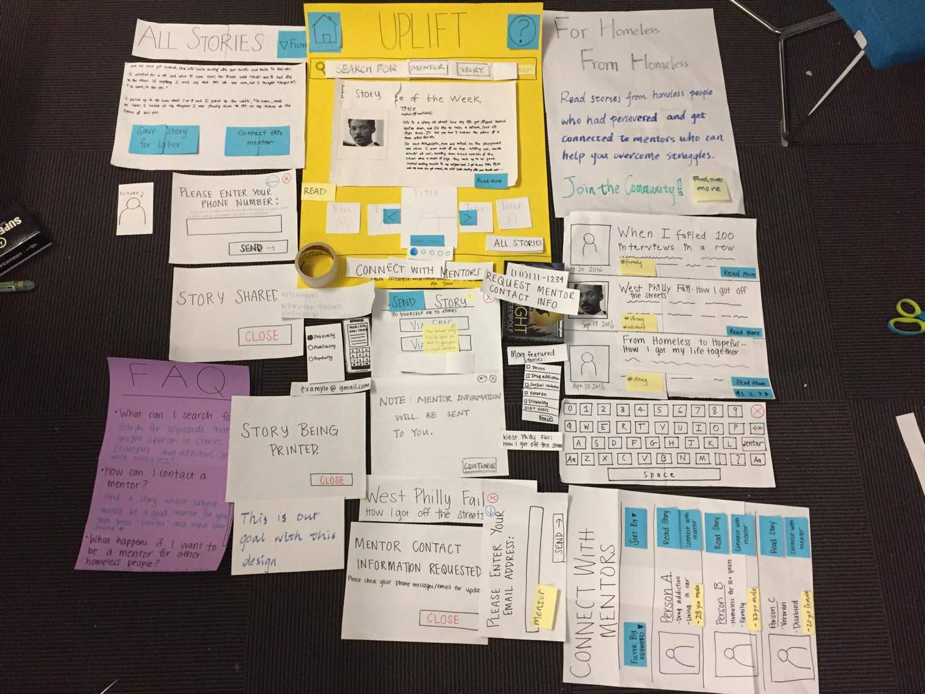Problem and Solution
It is estimated that over 50% of homeless people are unemployed, usually causing them to fall into a cycle of chronic homelessness. Although a striking majority of homeless people want to get back on their feet and become employed, the negative stigma surrounding homelessness destroys their confidence and aspirations, and without confidence, the other hurdles that homeless people face while trying to become employed are impossible to overcome. Due to the lack of a proper support system to keep encouraging them, homeless people struggle to find a way to stay confident while trying to get themselves out of their situation. Our challenge is to create a design solution that instills confidence in homeless people trying to get out of a particular situation and find employment.
Our solution involves a touch screen monitor in a public library, an important location and resource for homeless people, with SMS text messaging capabilities. Our design aims to help with homeless people’s lack of confidence by allowing them to read success stories of other employed and previously homeless people, letting them know that there are people with similar backgrounds that have succeeded in getting back on their feet; our design allows these users to save the story for later reading by sending the story to their phone via SMS or to their email. Our design also allows for homeless people struggling to gain confidence while looking for jobs to become connected with mentors that have gone through similar experiences by receiving contact information of mentors willing to help.

We sketched simple design ideas to get a clear understanding of what tasks to support with this method.

We envisioned various situations of homeless users utlizing our design with this method.

We conducted research with homeless users in public libraries to understand design errors and violations of heuristics. We iterated our paper prototype after each usability test.
We conducted interviews and directed storytelling in order to research our target user group of homeless people seeking employment. Based on our user research, we decided on two tasks that our design would support:
We developed a paper prototype, and after two heuristic evaluations and three usability tests, we refined our design and developed our digital mockups.
Main Features

Homeless users can view featured stories, quickly search for stories or for potential mentors by keyword, or can view lists of all stories or all mentors.

Users can view all stories and sort by preferred condition. They can use the synopsis or tags to quickly locate stories resonating with their experience, and can choose to read the full story.

The user can read a full story about another person who has had an experience of being homeless and eventually getting back on their feet and finding employment. They can choose to contact the mentor who wrote the story, or can send the story to themselves or to others.

The user can choose to request mentor contact information from an individual story or from a page of all mentors. The contact information is sent to their phone via SMS.
View our reports made throughout the design process.



